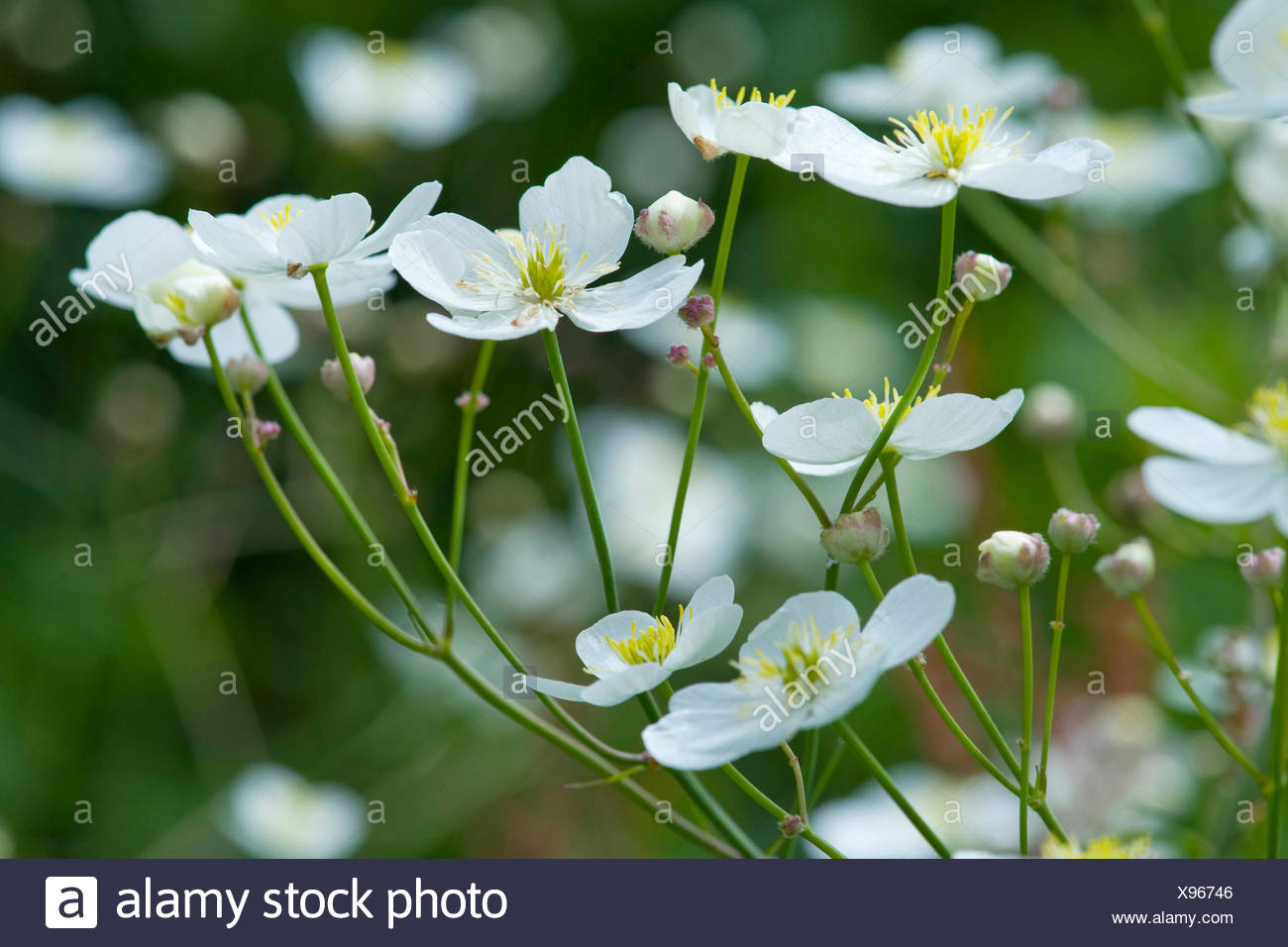- White Buttercup Ground Cover
- White Buttercup Perennial
- White Buttercup Flower Pictures
- White Buttercup
- White Buttercup Image
The hermaphrodite flowers are single or in a cyme, have usually five (but occasionally as few as three or as many as seven) mostly green sepals and usually, five yellow, greenish or white petals that are sometimes flushed with red, purple or pink (but the petals may be absent or have a different, sometimes much higher number). Flowers come in white, cream, and many shades of yellow, orange, red, and pink. Popular Tecolote Giant strain is available in single colors, mixed colors, and picotees. Bloomingdale strain offers the same range of colors on dwarf plants 810 inches high. All types are good in the ground or in pots. White Buttercup's botanical name is Beesia, and it's a fantastic shade-loving ground cover. It makes a great filler for woodland gardens, and really, anywhere you can't get sun-loving grass to grow. Especially handy in zones 6 and south, as it's evergreen in warmer zones. It's a year-round easy-care shade solution—what could be better? Among them are the Meadow Buttercup (Ranunculus acris), Goldilocks Buttercup (R. Auricomus), Creeping Buttercup (R. Repens), Large White Buttercup (R. Platanifolius), Celery-leaved Buttercup (R. Sceleratus), Corn Buttercup (R. Arvensis), Bulbous Buttercup (R. White/Near White. Bloom Characteristics: This plant is attractive to bees, butterflies and/or birds. Flowers are fragrant. Bloom Size: Unknown - Tell us. Bloom Time: Mid Spring. Late Spring/Early Summer. Blooms repeatedly. Other details: May be a noxious weed or invasive. Soil pH requirements: 5.6 to 6.0 (acidic) 6.1 to 6.5 (mildly acidic) 6.6 to 7.5 (neutral).
Your nose grazing my shoulder. Clothes petaling free.
Only your neck. Only my ear. Soft and perennial.
I fold your t-shirts and leave them in stacks
around the room. Television garden.
I show you a wild rash across my elbow:
red speckled, Jackson-Pollocking across skin.
You show me your favorite scar: a tributary
crossing your forearm. I remember a morning
where you told me to show you
my flesh. We drove the green car
and the stop lights blistered all the way.
You told me I was a sidewalk aberration
and I fed you spoonfuls of butter
to slow your mouth down. I removed the fork
all by myself and you never saw the mark it left.
The dinner plate steering wheel, all set for feasting.
I was your favorite wound.
Robin Gow is a trans poet and young adult author. They are the author of OUR LADY OF PERPETUAL DEGENERACY (Tolsun Books 2020) and the chapbook HONEYSUCKLE (Finishing Line Press 2019). Their first young adult novel, A MILLION QUIET REVOLUTIONS is slated for publication winter 2022 with FSG. Gow’s poetry has recently been published in POETRY, New Delta Review, and Washington Square Review. Gow received their MFA from Adelphi University where they were also an adjunct instructor. Gow is a managing editor at The Nasiona.
Cloony Buttercup illustration by C.B. Auder (digital collage).
Water Buttercup control, 2 good options.
Published by Jamie Markoe on November 14, 2013 0 CommentsWater Buttercup, Water Crowfoot (ranunculus aquatilis), is one perennial weed in the Buttercup family that has 360 different species. It can be found world-wide in the quiet waters of ponds, in ditches and along the shoreline of lakes and slow moving streams.
Water Buttercup is eaten by a variety of waterfowl and fish. It also provides habitat for aquatic insects.
White Buttercup Ground Cover
It has 2 distinct types of leaves. Submersed leaves are alternately attached, fan-shaped with fine thread-like leaves that collapse when removed from the water. Floating leaves, when present, are flat and have 3-5 scalloped lobes. It has a single flower on a stiff stalk that rises above the water surface. The flower has a yellow center and 5 white petals that bloom from April to August.
Water Buttercup propagates from seeds and stem fragments.
Water Buttercup can grow in thick dense mats that will restrict water recreation including boating, swimming and fishing.
Physical removal and chemical treatment are 2 good options.
1) Physical removal can be easily obtained by cutting or raking out all the weed fragments.



White Buttercup Perennial
2) Chemically control area with diquat.
Diquat mixed with a non-ionic surfactant is an excellent fast-acting contact option. Addition of copper ethanolamine will often improve effectiveness in difficult to control areas.
White Buttercup Flower Pictures
We recommend, 6 oz. of Harvester Liquid with 3 oz. CYGNET PLUS Liquid or combine 4 oz. of Harvester Liquid, 4 oz. of CUTRINE-PLUS Liquid and 3 oz. of CYGNET PLUS Liquid. Add enough water to the concentrate to make 1½ gallons of spray solution. 1½ gallons of solution will treat 1,000 sq. ft. (100’ x 10’). It is best to treat before flowering. Repeat treatment may be needed to make good contact with all the foliage.
Next Steps:
To visit our online store click here

To Request our product catalog click here
White Buttercup
To learn about lake weed analysis click here
White Buttercup Image
Post Comment
